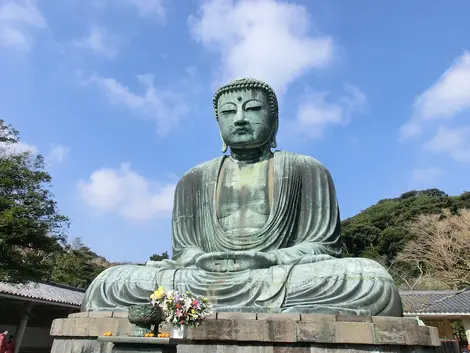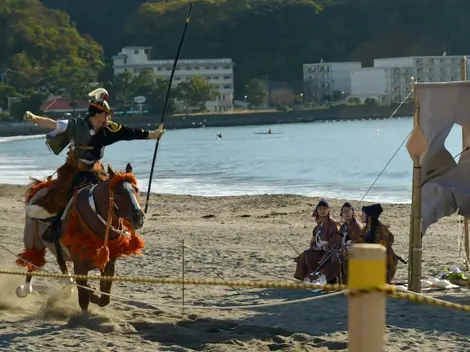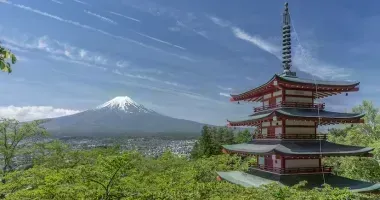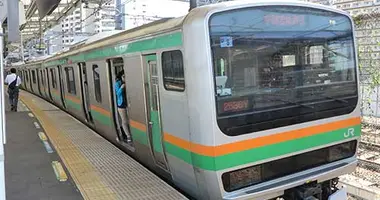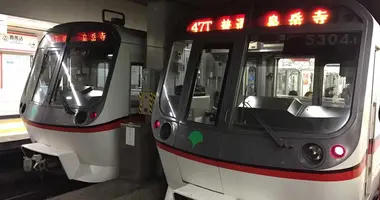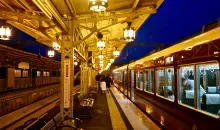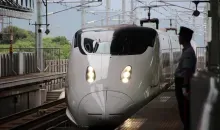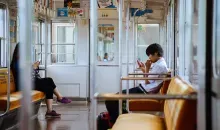Discovering the JR Yokosuka Line: Your gateway to Tokyo and beyond
- Published on : 16/04/2024
- by : Japan Experience
- Youtube
The JR Yokosuka Line is a major railway line connecting central Tokyo to popular destinations in Kanagawa prefecture, making it an ideal choice for tourists looking to explore the Tokyo metropolitan area and charming coastal towns using their Japan Rail Pass. This article covers key information about the line's route, major stations, train services, and sightseeing highlights to help you make the most of your journey.
History and overview of the JR Yokosuka Line
The Yokosuka Line was constructed in 1889 to provide transportation from Ōfuna to the Yokosuka Naval Arsenal, one of Japan's most important military bases at the time. Over the years, the line was extended to facilitate increased rail traffic, and today it stretches 73.3 km from Tokyo Station to Kurihama Station in Yokosuka. Officially, the name "Yokosuka Line" refers to the 23.9 km segment between Ōfuna and Kurihama stations, but the entire route is commonly known as the Yokosuka Line.
Navigating the Yokosuka Line with a JR Pass
Using your Japan Rail Pass, you can enjoy unlimited travel on the Yokosuka Line, making it a convenient and cost-effective way to explore the region. The line is fully covered by the pass, and Green Seats (first class) are available for those with a Green JR Pass. Simply present your pass at the ticket gates to access the platforms and board the trains.
Key stations and transfer points along the route
The Yokosuka Line serves several important stations, including:
Tokyo Station: This major hub provides connections to destinations across Japan via shinkansen, as well as transfers to numerous JR and subway lines, including the Narita Express to Narita Airport.
Shinagawa Station: Located in Tokyo's Shinagawa ward, this station offers transfers to the JR Yamanote Line and Tokaido Shinkansen. The area around the station features several museums and Sengakuji Temple, where the famous 47 Ronin are buried.
Yokohama Station: As the busiest station in Kanagawa prefecture, Yokohama Station provides access to various JR, private, and subway lines. The station is conveniently located near popular attractions like the Minato Mirai district and Chinatown.
Ofuna Station: This station in Kamakura City is surrounded by a bustling commercial area. Nearby points of interest include Ofuna Kannon Temple with its 25-meter-high Buddha statue and Josenji Temple with the Taya Caves.
Exploring the charming coastal destinations
Kamakura, a seaside town famous for its many historic temples and shrines, is a must-visit destination along the Yokosuka Line. Kita-Kamakura Station provides access to several picturesque Zen temples, while Kamakura Station is the gateway to iconic sights like the Great Buddha statue at Kotoku-in Temple, Hasedera Temple, and Tsurugaoka Hachimangu Shrine.
Other noteworthy stops include Zushi, a small beach resort town popular in the summer months; Yokosuka, a major port city with American and Japanese naval bases; and Kurihama, known for its expansive flower park and Perry Memorial Hall, which commemorates the arrival of Commodore Perry's Black Ships in 1853.
Types of train services on the Yokosuka Line
The Yokosuka Line offers several train services to cater to different travel needs:
Local trains stop at all stations along the route, providing a convenient way to explore the various destinations at a leisurely pace.
Rapid and limited express services, such as the Narita Express and Shonan-Shinjuku Line, make fewer stops and offer faster connections between major stations.
Through services extend beyond the Yokosuka Line to the Sobu Line, allowing direct access to destinations like Chiba, Narita Airport, and as far as Kashima-Jingu on the Kashima Line without the need to transfer.
Sightseeing highlights and attractions accessible from the line
The Yokosuka Line passes through areas rich in history, culture, and natural beauty. In addition to the numerous historic temples and shrines in Kamakura, visitors can enjoy the beaches and seaside towns of Zushi and Kurihama, explore museums and parks in Yokohama and Shinagawa, and sample local specialty foods like shirasu (whitebait) and maguro (tuna) along the way.
Tips for making the most of your JR Yokosuka Line trip
To ensure a smooth and enjoyable journey on the Yokosuka Line, consider the following tips:
- Plan your itinerary in advance, taking into account train schedules and transfer times.
- Take advantage of the Japan Rail Pass to save money on transportation costs.
- Avoid peak travel times, such as weekends and holidays, to minimize crowds.
- Bring a reusable water bottle and snacks, as not all stations have extensive food options.
- Use luggage storage facilities at major stations if you plan to explore without heavy bags.
- Download the JR East app for real-time train information and updates.
With its convenient access to both central Tokyo and the beautiful Kanagawa prefecture, the JR Yokosuka Line is an excellent choice for travelers looking to discover the best of the region. By understanding the line's history, major stations, train services, and sightseeing highlights, you can create an unforgettable journey that suits your interests and preferences.





